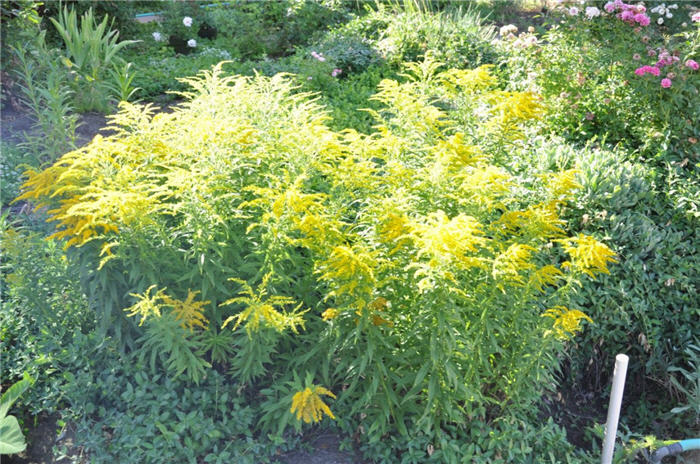| Botanical Name: Solidago rugosa 'Fireworks' | |
| Common Name: Fireworks Goldenrod |

-
Anatomy
-
Culture
-
Design
Plant Type
Perennial
Height Range
1-3'
Flower Color
Yellow
Flower Season
Fall
Leaf Color
Green
Bark Color
n/a
Fruit Color
n/a
Fruit Season
n/a
Sun
Full, Half
Water
Medium, High
Growth Rate
Fast
Soil Type
Clay, Loam
Soil Condition
Average, Rich, Poor, Well-drained, Moist
Soil pH
Neutral
Adverse Factors
Invasive
Design Styles
English Cottage, Formal, Japanese, Meadow, Ranch
Accenting Features
Fall Color, Showy Flowers
Seasonal Interest
Summer, Fall
Location Uses
Background, Shrub Border, Foundation, Patio, Walls / Fences
Special Uses
Cut Flowers, Erosion Control, Mass Planting, Naturalizing
Attracts Wildlife
Birds, Butterflies
Information by: Stephanie Duer
Photographer:
Photographer:
-
Description
-
Notes
'Fireworks' is a dwarf selection of rough-stemmed goldenrod. It features tiny, bright yellow flowers borne in dense, plume-like panicles on the ends of stiff, arching, alternate-leaved stems typically growing 36 to 42 inches tall and 24 to 36 inches wide. Fall bloom period (September-October). Attractive to bees and butterflies. Foliage is green. Good cut flower. Useful in naturally styled landscapes, or partnered with ornamental grasses.
Grow in average to loamy, well drained soil, with moderate moisture. Best growth is in full sun, though it will tolerate some shade. This species of goldenrod tolerates more moisture than other species. Has been wrongly accused of causing hay fever which is actually an allergic reaction caused by wind-borne pollen from other plants such as ragweed.